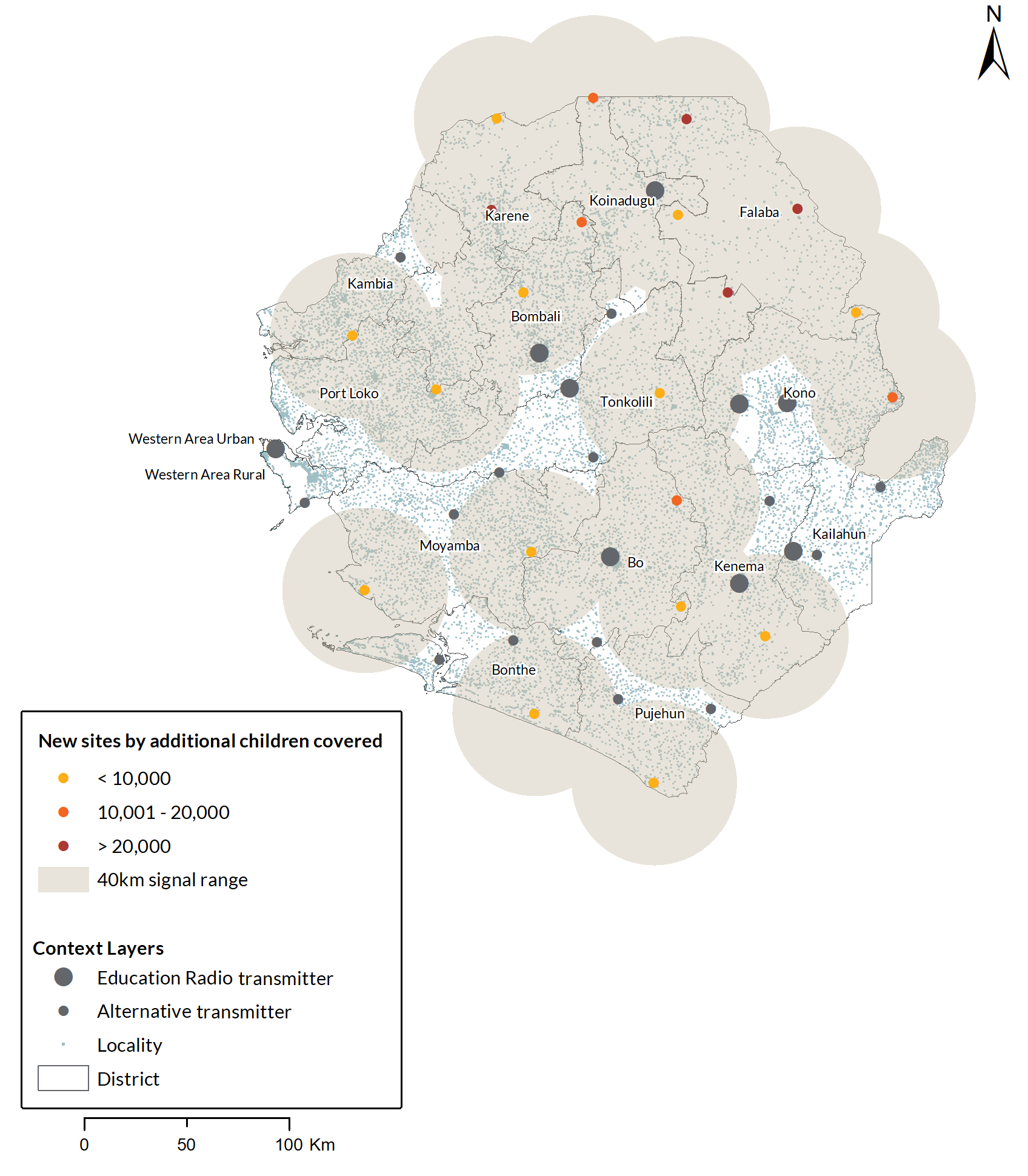Using data analytics to improve radio coverage and enhance education access during disease outbreaks in Sierra Leone
Disease outbreaks often force governments to make extraordinary decisions to protect their populations. Chiefly, governments will implement measures to reduce population movements or otherwise prevent people from coming into close contact with each other; these measures can include in-country or international travel restrictions, bans on public or private gatherings, as well as closures of service sites such as schools and religious centres. Some of these measures were instituted in Guinea, Liberia, and Sierra Leone from 2014 to 2016 to fight the largest and most complex Ebola outbreak in history. As a result, the government of Sierra Leone closed all educational institutions, disrupting the educations of thousands of children. To continue educating students remotely, in a country where households have limited access to the internet and other technologies, the Ministry of Basic and Senior Secondary Education (MBSSE) developed the Education Radio Teaching Programme. This cost-effective initiative relied on experienced teachers recording lessons, adapted to local languages, that were broadcast across the country and allowed children to safely listen to their classes from home.
In March 2020, the ministry rolled out the same initiative in response to the spread of COVID-19. But the limited range of the nine radio transmitters (owned by MBSSE’s Education Radio) used to broadcast the lessons led to some regions having better access to the programme than others. To solve this problem, the MBSSE enlisted GRID3 to use geospatial data to inform strategic planning around improving coverage.
In collaboration with MBSSE, the GRID3 team at Flowminder carried out a three-phase analysis using Geographic Information System (GIS) techniques and its optimisation algorithm to determine how to achieve complete coverage. First, the team identified the coverage gaps of the nine Education Radio transmitters; then assessed broadcast power of other existing transmitters for expanding coverage; and finally used Flowminder’s optimisation algorithm to identify the location of possible new transmitters to be built.
In the resulting report, analysts estimated that 1.9 million (66 percent) of Sierra Leone’s school-age children (ages 3-17) lived within the signal range of one of the nine Education Radio transmitters, with border districts in the south and north of the country often being out of range.
For the second phase, the transmitters of 143 local radio stations were assessed and 14 of these “alternative transmitters” were identified as having high potential for boosting coverage. By combining the 14 alternative transmitters with ones being used in the programme, the government could increase estimated coverage to 91 percent. As part of the government’s initial response to COVID-19 school closures last year, some of these alternate radio stations were temporarily enlisted and paid to transmit the radio teaching programme in districts such as Pujehun and Kailahun.
The final stage of the analysis focused on site placement optimisation; simulating where new radio transmitters could be built based on existing transmitter locations and population coverage. The GRID3 team at Flowminder modelled two optimisation scenarios to achieve complete coverage. The first scenario incorporated the 14 alternative transmitters, simulating the location of 21 new sites to build transmitters and, by doing so, the programme could attain complete coverage, (an estimated additional 977,000 children). The second scenario did not make use of the alternative transmitters. Analysts filled the gaps among the existing Education Radio transmitters only and estimated that 32 new transmitters would be required to reach complete coverage of school-age children.
“Results from the optimisation scenarios have allowed us to identify the location for three new transmitters that would increase coverage of the Education Radio Teaching Programme to approximately 78 percent. MBSSE has already secured money for these additional transmitters, so this work is very timely,”
concludes David Sengeh, Minister Of Basic and Senior Secondary Education and Chief Innovation Officer for the government of Sierra Leone.
This strategic placement of new transmitters marks a strong beginning for attaining better coverage. The full report including recommended next steps is available here.

